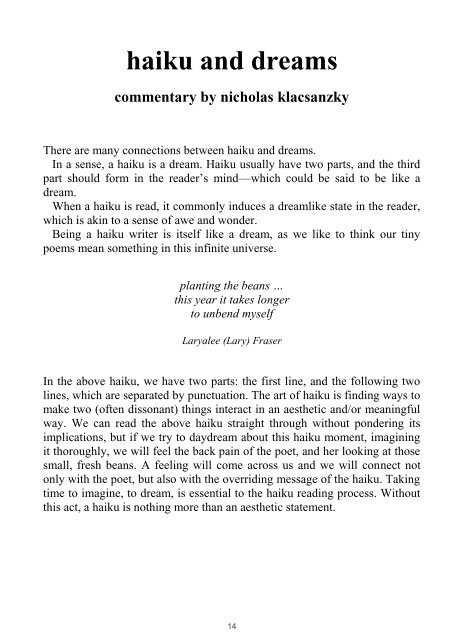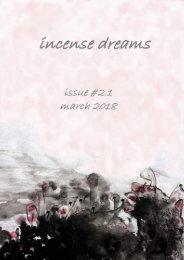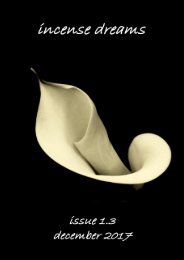Create successful ePaper yourself
Turn your PDF publications into a flip-book with our unique Google optimized e-Paper software.
haiku and <strong>dreams</strong><br />
commentary by nicholas klacsanzky<br />
There are many connections between haiku and <strong>dreams</strong>.<br />
In a sense, a haiku is a dream. Haiku usually have two parts, and the third<br />
part should form in the reader‘s mind—which could be said to be like a<br />
dream.<br />
When a haiku is read, it commonly induces a dreamlike state in the reader,<br />
which is akin to a sense of awe and wonder.<br />
Being a haiku writer is itself like a dream, as we like to think our tiny<br />
poems mean something in this infinite universe.<br />
planting the beans …<br />
this year it takes longer<br />
to unbend myself<br />
Laryalee (Lary) Fraser<br />
In the above haiku, we have two parts: the first line, and the following two<br />
lines, which are separated by punctuation. The art of haiku is finding ways to<br />
make two (often dissonant) things interact in an aesthetic and/or meaningful<br />
way. We can read the above haiku straight through without pondering its<br />
implications, but if we try to daydream about this haiku moment, imagining<br />
it thoroughly, we will feel the back pain of the poet, and her looking at those<br />
small, fresh beans. A feeling will come across us and we will connect not<br />
only with the poet, but also with the overriding message of the haiku. Taking<br />
time to imagine, to dream, is essential to the haiku reading process. Without<br />
this act, a haiku is nothing more than an aesthetic statement.<br />
14

















